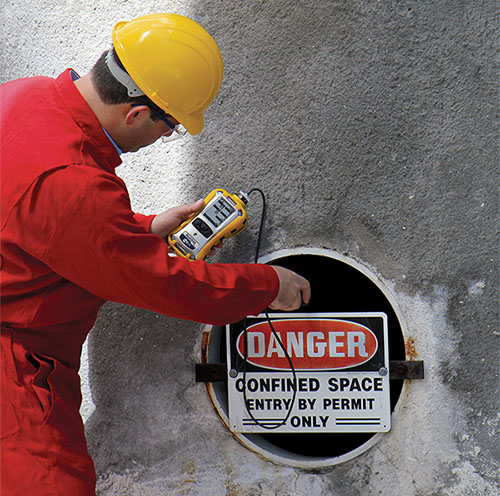Confined Space Detector and Gas Monitor Training: Ensuring Workplace Safety
In any workplace, safety should always come
first, but it is especially important in restricted space industries like
petrochemicals, manufacturing, and construction. Employers must offer
sufficient training on how to operate confined space detectors and
gas monitors properly in order to successfully protect workers in these
settings. This instruction is crucial for avoiding mishaps, reducing exposure
to dangerous gases, and maintaining a secure workplace.
The presence of potentially hazardous gases
in enclosed spaces can be found and measured using specialized equipment known
as confined space detectors. When
determining the air quality in tight places, these detectors are essential
since they warn employees about potential threats before they enter. To
maximize their efficiency, confined space detectors must be properly maintained
and operated.
A crucial element of ensuring workplace
safety is gas monitor training.
Employees learn about the several kinds of gases that are frequently found in
confined spaces, such as flammable gases, hazardous compounds, and
oxygen-deficient atmospheres, during this training. To protect their personal
safety and the safety of their coworkers, they are taught how to use gas
monitors to identify harmful gases, evaluate results, and take appropriate
action.
Those who take a course on gas monitors get
practical instruction in calibrating gas monitors, maintaining sensor
integrity, and comprehending warning systems. They can confidently use gas
monitors, diagnose equipment problems, and respond appropriately to gas
detection alarms thanks to their practical knowledge.
Another crucial component of training is
comprehending the significance of appropriate confined space entry techniques.
Before accessing confined places, workers are educated to perform comprehensive
risk assessments, secure permissions, and put appropriate control systems in
place. The oxygen content, the presence of combustible gases, and the presence
of poisonous compounds are all indicated by gas monitor readings, which are
crucial in determining if the atmosphere is suitable for entrance.
Additionally, staff members receive
training on how to properly use personal protection equipment (PPE) designed
for confined area entrance. This covers lifelines, harnesses, and respiratory
protection. Training sessions also cover effective communication methods,
emergency protocols, and restricted space rescue skills.
Regular refresher training and ongoing
monitoring of gas monitoring devices are essential to maintaining a safe
working environment. Employers must stress the significance of following safety
procedures, promote a culture of safety, and make sure staff members are
knowledgeable on the most recent safety procedures and tools.
Summary: Training in gas monitors and confined space detectors is essential
for worker safety, especially in sectors that deal with confined spaces. The
danger of accidents and exposure to hazardous gases is drastically reduced by
providing workers with the information and abilities to use gas monitors
correctly and adhere to safe confined space entry procedures. Employers can
establish a safer working environment and safeguard the welfare of their
employees by putting a priority on thorough training and fostering a
safety-conscious culture.





Comments
Post a Comment